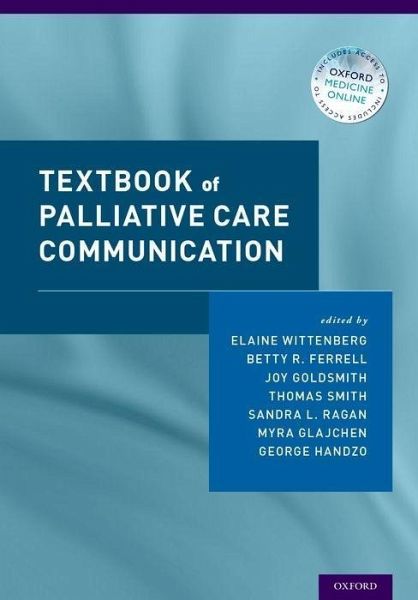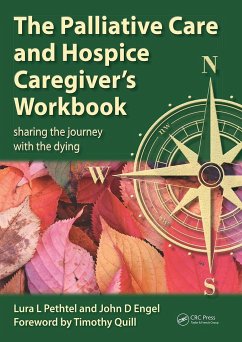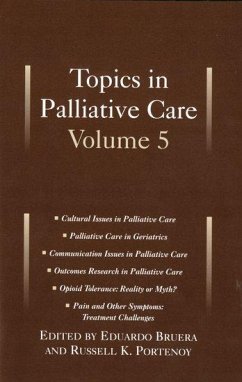
Textbook of Palliative Care Communication
Versandkostenfrei!
Versandfertig in 1-2 Wochen
141,99 €
inkl. MwSt.
Weitere Ausgaben:

PAYBACK Punkte
71 °P sammeln!
The Textbook of Palliative Care Communication is the authoritative text on communication in palliative care, providing a compilation of international and interdisciplinary perspectives. This online resource volume was uniquely developed by an interdisciplinary editorial team to address an array of providers including physicians, nurses, social workers, and chaplains, and it unites clinicians with academic researchers interested in the study of communication. By featuring practical conversation and curriculum tools stemming from research, this text integrates scholarship and inquiry into transl...
The Textbook of Palliative Care Communication is the authoritative text on communication in palliative care, providing a compilation of international and interdisciplinary perspectives. This online resource volume was uniquely developed by an interdisciplinary editorial team to address an array of providers including physicians, nurses, social workers, and chaplains, and it unites clinicians with academic researchers interested in the study of communication. By featuring practical conversation and curriculum tools stemming from research, this text integrates scholarship and inquiry into translatable content that others can use to improve their practice, teach skills to others, and engage in patient-centered communication. The volume begins by defining communication, explicating debatable issues in research, and highlighting specific approaches to studying communication in a palliative care context. Chapters focus on health literacy and cultural communication, patient and family communication, barriers and approaches to discussing palliative care with specific patient populations, pain, life support, advance care planning, and quality of life topics such as sexuality, spirituality, hope, and grief. Team communication in various care settings is outlined, and current research and education for healthcare professionals are summarized. Unique to this volume are chapters on conducting communication research, both qualitatively and quantitatively, to promote further research in palliative care.













